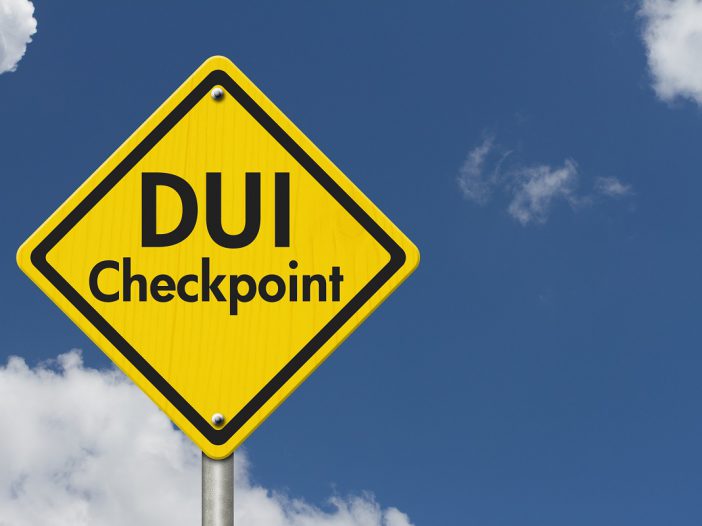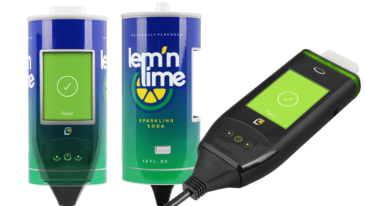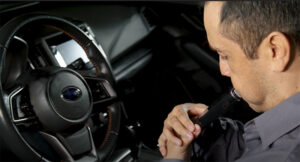
10 DUI Checkpoint Statistics
Driving under the influence of alcohol is a dangerous and potentially fatal decision that law enforcement departments across the United States have been attempting to tackle for decades. With thousands of Americans dying from alcohol-related motor vehicle accidents each year, the concern is a pressing one for our government and for the community at large.
Drunk driving can lead to an array of serious consequences including DUI charges that may result in the mandatory use of a car breathalyzer, license suspension, felony charges, prison time, or worst of all, death.
One way that law enforcement has tried to combat this issue is by implementing DUI checkpoints that help screen for potential drunk drivers. These checkpoints have been crucial in the battle against drunk driving, but how effective are DUI checkpoints really?
The Statistics
The statistics around alcohol-related vehicle accidents and fatalities have been well documented, and widespread reporting of these statistics has led to the implementation and refinement of several law enforcement strategies. An additional challenge, however, has also become the accurate interpretation of statistics. In the search for the best way to reduce drunk driving, it’s possible to misunderstand the facts. In this article, we will examine DUI checkpoints and 10 statistics around their efficacy.
What Is A DUI Checkpoint?
A DUI checkpoint, or sobriety checkpoint, is a system that law enforcement officers use to curb impaired driving. Officers will select a predetermined location at which they stop passing vehicles and check for driver intoxication. In some instances, police officers may stop every car, while in other instances, every third or tenth car.
The strategy behind DUI checkpoints is to deter driving while intoxicated by increasing the perceived risk of arrest. Law enforcement will often make a checkpoint publicly visible and even heavily advertised in order to heighten the sense among citizens that they may be stopped. While common opinion tends to acknowledge that the rate of arrests for impaired driving at checkpoints is actually quite low, the actual deterrent effect can be difficult to measure.
Although the use of sobriety checkpoints can inspire disagreement among supporters and detractors, it is important to understand the intended effects of DUI checkpoints and to understand some of the statistics that are available.
10 DUI Checkpoint Statistics
The statistics around the use of sobriety checkpoints present a valuable tool for analyzing their merits and efficacy as a means of deterring intoxicated driving. While statistics can sometimes be misleading, when properly applied, they can create a fairly accurate picture of a complicated landscape. The following is a list of areas where it can be helpful to apply a statistical lens:
- Number of alcohol-impaired driving fatalities
- Legality of checkpoints in the United States
- Incidence of crashes after checkpoint implementation
- Alcohol-related fatalities
- Case study in checkpoint efficacy
- Effects of increased number of checkpoint locations
- Arrest statistics
Number of Alcohol-Impaired Driving Fatalities
In 2017, the total number of alcohol-impaired driving fatalities was 10,874, which illustrates a slight overall increase from the year before. This number is a fairly significant figure, considering that it represents lives lost due to an ultimately avoidable cause. In other words, drunk driving is a choice that can have potentially fatal consequences for both the driver and other motorists.
Legality of Checkpoints in the United States
Sobriety checkpoints are not legal in all 50 states. While the U.S. Supreme Court ruled in 1990 that checkpoints are constitutional, only 38 states, plus the District of Columbia, currently allow them to be used. Additionally, the states that allow checkpoints have allocated varying amounts of money towards their implementation, meaning that consistent use occurs in an even smaller number of areas.
Incidence of Crashes After Checkpoint Implementation
The Centers for Disease Control and Prevention (CDC) conducted a review of 11 studies that found checkpoints created a decline in the number of alcohol-related crashes in the area, including fatal, injury, and property crashes, each by about 20 percent. Another study the CDC completed discovered that checkpoints lessened alcohol-related crashes by 17 percent, and all crashes by 10 to 15 percent.
Alcohol-Related Fatalities
Another CDC study focused on seven states that employed numerous checkpoints. Researchers found a reduction of all alcohol-related deaths by a rate of between 11 and 20 percent. The statistic is remarkable, considering the number includes fatalities not involving a vehicle, and it also illustrates the large proportion of alcohol-related deaths that do involve some kind of motor vehicle.
Case Study
The CDC cites a study in which researchers observed the implementation of a number of checkpoints around the Indianapolis area. The results were mixed. The rates of impaired-driver collisions decreased slightly in non-downtown locations, but actually increased in downtown areas. The lessening of alcohol-related crashes was also insignificant. However, the study did find that the number of collisions in periods after the checkpoint was conducted decreased 19 percent compared to pre-checkpoint periods.
Effects of Increased Quantity of Checkpoint Locations In An Area
Also according to the CDC, in West Virginia, certain law enforcement agencies experimented with setting up additional checkpoints in their areas with fewer staffers. The areas that used the low-staff checkpoints reported that the number of nighttime drivers who tested for blood alcohol levels of .05 or higher was 70 percent lower than those areas that did not set up the additional checkpoints.
Arrest Statistics
After obtaining data from the Indiana Criminal Justice Institute regarding checkpoint statistics over a four year period, ABC News reported that, out of 91,278 cars that passed through the checkpoint, less than 1% drivers were arrested for driving while intoxicated. In fact, ABC News also reported that a person who gets stopped at a checkpoint is actually more likely to get a citation for something other than for drunk driving.
Although on the surface, the arrest statistics seem to support the idea that sobriety checkpoints are largely ineffective, it’s important to remember that the success of checkpoints as a means of deterring impaired driving can be a complicated question to measure. Things are not so simple as, “more arrests means less drunk drivers.”
Are DUI Checkpoints Effective?
Critics of sobriety checkpoints cite the lack of alcohol-related arrests as proof that they are not worth the expense of law enforcement time and resources. On the surface, it seems that the intention behind a DUI checkpoint is to arrest people who are driving under the influence, and if arrests aren’t being made, then how could checkpoints be proven effective?
In reality, however, though the statistics vary slightly in specifics, they certainly seem to support the efficacy of sobriety checkpoints as a viable means of keeping people from drinking and driving. The fact that most of the CDC’s studies confirm an inverse correlation between the number of checkpoints and impairment-related crashes tells a story of its own, and the argument that arrests are necessary to prove the worth of checkpoints, in large part, misses the point.
The focus of a checkpoint is not to make arrests but to deter potential drunk drivers by the threat of arrest. The idea is that it can often be enough to publicize the presence and location of a sobriety checkpoint, because that thought alone can keep intoxicated people off of the roads. With penalties for a DUI consisting of significant fines, loss of license, or even jail time, there exists plenty of incentive for finding an alternative means of transport to getting behind the wheel after a few drinks.
Why Not More DUI Checkpoints?
If the statistics seem to clearly confirm the success rates of sobriety checkpoints, then it might be reasonable to wonder why they are not more widely utilized across the country. The CDC reports that only 13 states regularly fund sobriety checkpoints. With the U.S. Supreme Court declaring them constitutional, and 38 states having made them legal, why do we not see checkpoints more often than we do currently?
There are some in the country who believe that sobriety checkpoints are a trespass against our fourth amendment rights to only a search and seizure that is “reasonable”. While the Supreme Court ruled that DUI checkpoints do not constitute unreasonable search and seizure, there still exists in some areas considerable public pressure against the idea of checkpoints, even if they are being utilized for road safety.
But really the answer to the question of why there aren’t more checkpoints around is simple: time and money. The CDC reports that a sobriety checkpoint requires at least several hours of each law enforcement officer present. It is also costly to perform the essential work of publicizing the checkpoint. Some state governments will fund full advertising campaigns around drinking and driving, and while these are effective, they can also be costly.
The Low(er) Cost Approach
As referenced in the statistics section earlier, the CDC reports that the law enforcement departments of two rural West Virginia counties succeeded in finding a way to stage additional checkpoints with fewer police officers and, therefore, a lower cost. While some counties and jurisdictions staff each checkpoint with up to 12 police, these West Virginia counties simply staffed 3 to 5 police.
The statistical report suggests the program was a resounding success, including drastically lower rates of elevated nighttime blood alcohol content. The success of the counties was so remarkable that there now exists a guidebook to help other law enforcement agencies set up and maintain their own low-cost checkpoints.
What Happens At A DUI Checkpoint?
When a driver pulls up to a sobriety checkpoint, a law enforcement officer will instruct him or her to lower the window and will generally do a quick visual check to see whether he or she is impaired. At checkpoints with adequate staffing, the officer may ask the driver to present the following documents:
- Valid drivers’ license
- Vehicle registration
- Proof of insurance
The officer may then run these documents through a computer to ensure that everything is in order. In cases where the checkpoint is operating in a high traffic area, or if there isn’t enough staff to keep traffic moving at a reasonable pace, the officer may simply conduct the visual check and wave the driver through. At some checkpoints, law enforcement will stop only one car out of every three or even every ten.
As one might imagine, stopping only one car out of every ten will not lead to a strong likelihood of identifying intoxicated drivers. If the intention is to examine every passing driver as well as to run documents, the checkpoint will require significant manpower to keep cars moving. It’s important to remember that, generally, checkpoints do not exist to catch impaired drivers in the act, but rather to function as a warning to those considering driving while under the influence.
Can You Refuse A DUI Checkpoint?
If a law enforcement officer is asking you to stop your car at a sobriety checkpoint, you are legally obligated to comply with his or her request. Refusing to go through a DUI checkpoint could result in an arrest and ultimately jail time. It’s not advisable to attempt to flee the checkpoint.
Conclusion
Many of the statistics compiled by the CDC suggest that the DUI checkpoint is a viable strategy for diminishing the potentially tragic effects of driving while intoxicated. Although the rates of impairment-related arrests at sobriety checkpoints are strikingly low, the rates of drunk driving arrests do not necessarily have a bearing on the efficacy of those checkpoints. Instead, the checkpoints work to make our roads safer by publicizing a likelihood that, “if you drink, you are running a serious risk of getting arrested.”
While it may be difficult to quantify and analyze the psychological effects of a sobriety checkpoint on the potential drunk drivers in the area, the statistics support the notion that, one way or another, checkpoints do reduce the rates of alcohol-related accidents and deaths. In drawing one’s own conclusions about checkpoints, it is therefore important to acknowledge the statistics.
References
Sobriety Checkpoints. CDC.gov.
Sobriety Checkpoints…ABC News.
State Map. Responsibility.org


